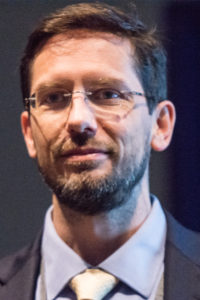
Clinician educators offered practical tips for instructing trainees during an interactive session on Monday. They reviewed the one-minute preceptor model, offered tips for teaching bedside procedures and for providing feedback, and went over best practices for rounding—all handy tools for a teacher’s toolkit.
James Town, MD, in the division of pulmonary, critical care, and sleep medicine at the University of Washington, reviewed the one-minute preceptor (OMP) model, which focuses on trainees taking ownership of their decisions.
The first step of the OMP model, Dr. Town explained, is to get trainees’ commitment by encouraging them to articulate their diagnosis/plan. Then, probe for evidence to evaluate their knowledge or reasoning. For example, ask them, “What led you to that conclusion?” he said. Along the way, teach general rules or take-home points, and be sure to reinforce what was done well, Dr. Town emphasized.
“I keep harping on this—but you need to foster a positive learning environment,” Dr. Town said. “You’re establishing a rapport with the team, you’re helping [the trainees] own their decision, you’re supporting them in that, and you’re helping them jointly develop the plan. … In establishing that rapport, you’re modeling listening and feedback behaviors that you want other people to emulate. So while you’re teaching, you’re teaching about teaching.”
Dr. Town said he focuses more on the principles of OMP—positive reinforcement and model teaching, for example—when implementing this teaching approach.
“Your goal is to take this little chickling of a resident/medical student and get them into a full fledge duckling that can fly across the world one day,” he said. “You want to stoke that internal motivation, you want to get them excited, proud, and happy of what they’ve done and get them ready to take the next steps.”
Alexander S. Niven, MD, FCCP, associate professor of medicine at Mayo Clinic College of Medicine and Science and chair of the session, reviewed best practices for bedside rounding for patient safety and learning climate, including preparing the team and setting expectations.
“It’s all about setting expectations up front and being relatively rigid in terms of your format and time management,” he said. “In the ICU, even in that busy environment, the same thing is fairly feasible.”
Benefits of bedside rounds, Dr. Niven explained, include patient and family satisfaction and experience, improved inter-professional teamwork, and reduced burnout.
Diana Kelm, MD, assistant professor of medicine at Mayo Clinic, shared some tips for teaching bedside procedures. The “see one, do one, teach one” method is highly ineffective, and there is concern for patient safety, she said. The first couple of tips she offered included assessing a learner’s current level of understanding and skills, and understanding the learner’s skill level with certain procedures.
“You really need to learn where the learner is in their comfort level with the procedure,” she said. “We need to ask them about their prior experiences, specifically, and we need to ask them about how they feel with this procedure, within this patient population, and within this specific setting. Every trainee’s acuity is going to be different, and each clinical urgency will be different.
Dr. Kelm also encouraged discussing roles and expectations of the learner and instructor.
William Kelly, MD, FCCP, concluded the session with tips on providing feedback, especially when dealing with a difficult learner. Tips he suggested included offering the right amount of feedback in a timely delivery.





